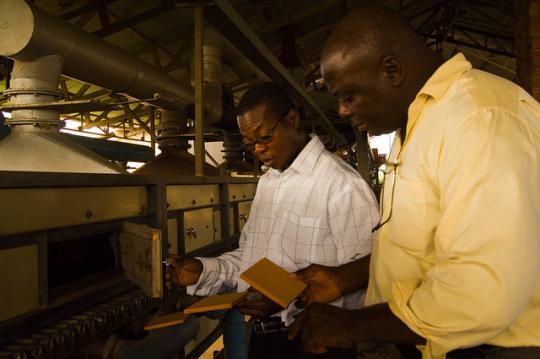
For governments to carry out their day-to-day functions, procurement -- or their ability to purchase goods and services -- is critical. It is both a service function and a strategic policy tool which can help achieve a broad range of social and economic welfare objectives. It cuts across all areas of public administration and builds on cooperation among multiple public and private stakeholders.
For procurement to better contribute to institutional effectiveness, then, it needs to innovate . Promoting innovation in procurement means processes that are transparent and efficient, and that facilitate equal access and open competition. Innovative solutions to public service needs are instrumental to delivering better services with long-term value for money.
Governments, as the major purchasers in every market, can also drive innovation in the private sector by stimulating their response to current and future service needs, smart regulation, and demand for innovative solutions. They can influence various industry’s investments in new skills, equipment and research and development, which, in turn, support growth and competitiveness. Many companies have already realigned their own procurement to put greater focus on aspects such as time to market and product success rather than traditional aspects like savings and contract compliance.
The evolution of the procurement function at the World Bank is mirroring these new realities in the government and private sector. This new function is centered on providing solutions to complex problems through collaboration of independent, multiple actors who work together under a system of rules.
The change management strategy required to deliver on this value proposition includes three closely interrelated dimensions: (1) develop and mobilize practical knowledge which can be applied effectively to problem solving; (2) ensure that this knowledge is systematically curated and mainstreamed through experiential learning; and (3) stimulate and sustain innovation as a business model. Innovation should not be about products or corporate functions. It must be embedded in everything we do and applied at the juncture of our strategic, organizational, and behavioral approaches.
Upon implementation of this strategy, a key question is: What can we learn from organizations that have innovated successfully? While resources are important, innovation is not about money. It’s about people, ideas, and leadership. It’s about understanding clearly the unmet needs that we want to target (be that resolving a problem, or improving value for money) by listening, collaborating, capturing the potential for enhancing outcomes, and scaling it up.
Simplicity is often the trademark of innovative solutions , but implementing them requires a deliberate strategy to use procurement to meet business objectives, clear processes for the identification of needs (stated as outcomes), timely and effective ideas and implementation management, and measuring of results.
Another important and enabling element is a culture that encourages intelligent risk taking and recognizes and rewards innovation. Innovation, especially in procurement, is not just “invention” in an environment where a thousand flowers bloom. It is useful when specifically needed or desirable, possible with technology, and viable in the context where it is supposed to be implemented. This is why most organizations where innovation happens consistently rely heavily on big data and technology, value technical excellence, and focus on external customers, rather than internal clients.
Human capital is critical for innovation both in public and private sector procurement. Procurement staff should be change agents in the organization, defining new ways of collaboration. Skills sets required include strong competences in internal and external relationship management, broad technical knowledge and a strategic mindset.
For the World Bank, innovative procurement will also mean a better understanding of how institutions and markets behave in different contexts. It will allow us to better use the whole procurement cycle -- from strategic planning to contract management -- to stimulate innovation through more informed, evidence-based decision-making. This will significantly enhance our ability to both meet our policy commitments and support development effectiveness.
If we are successful in implementing this change, it will also allow us to better capture our clients’ and colleagues’ imagination and became their partners of choice in resolving complex implementation and institutional problems and delivering better results.


Join the Conversation